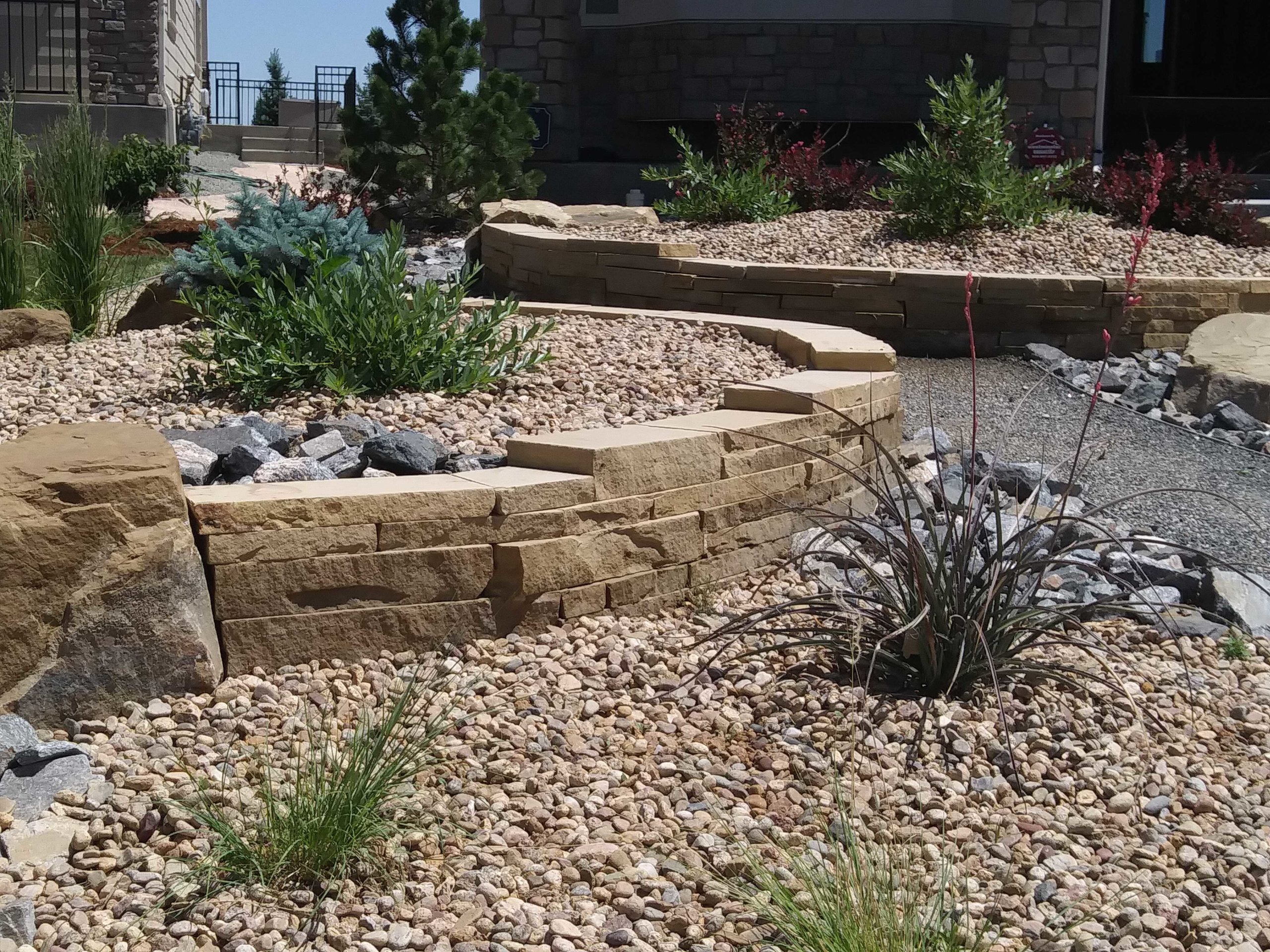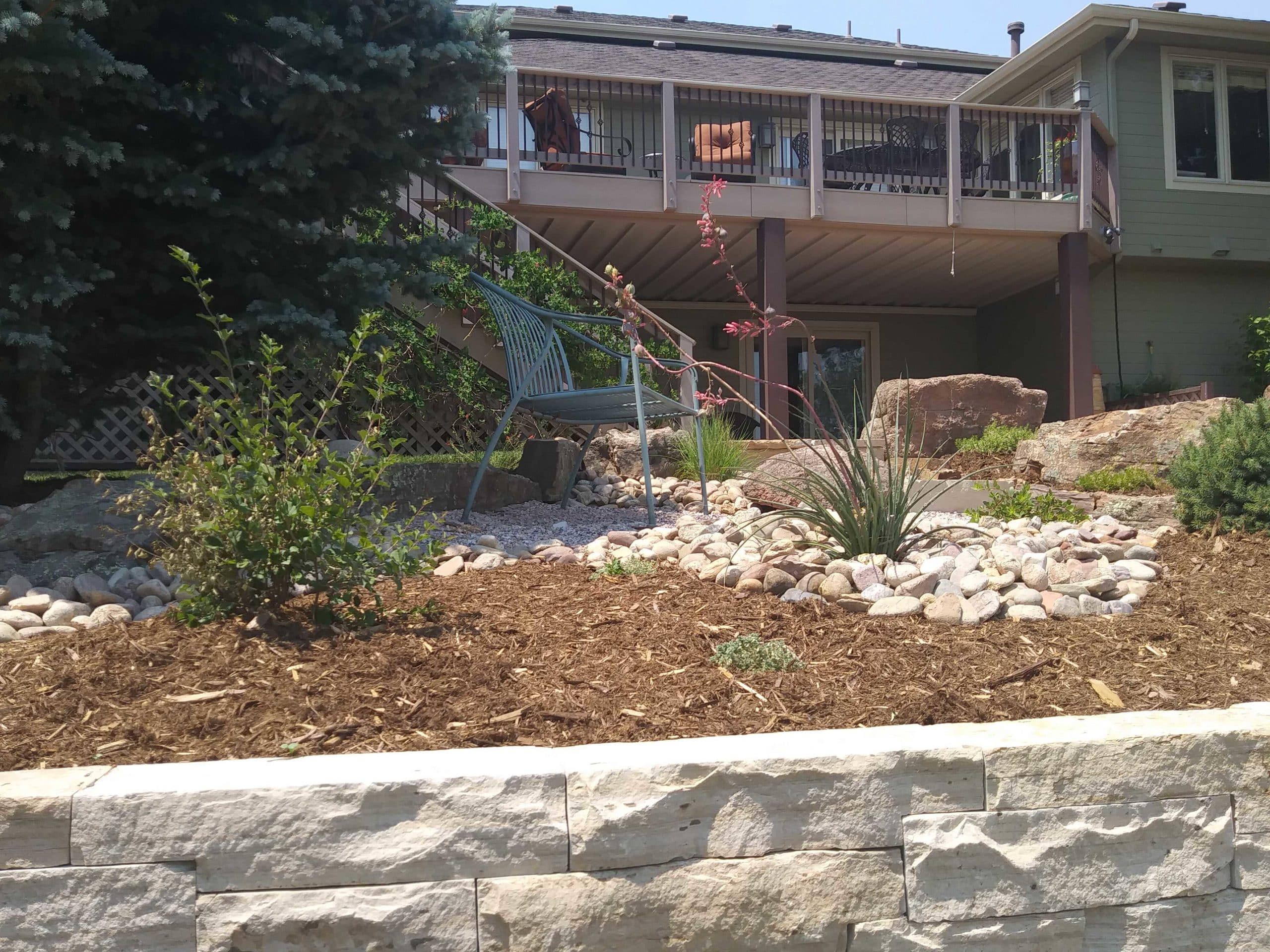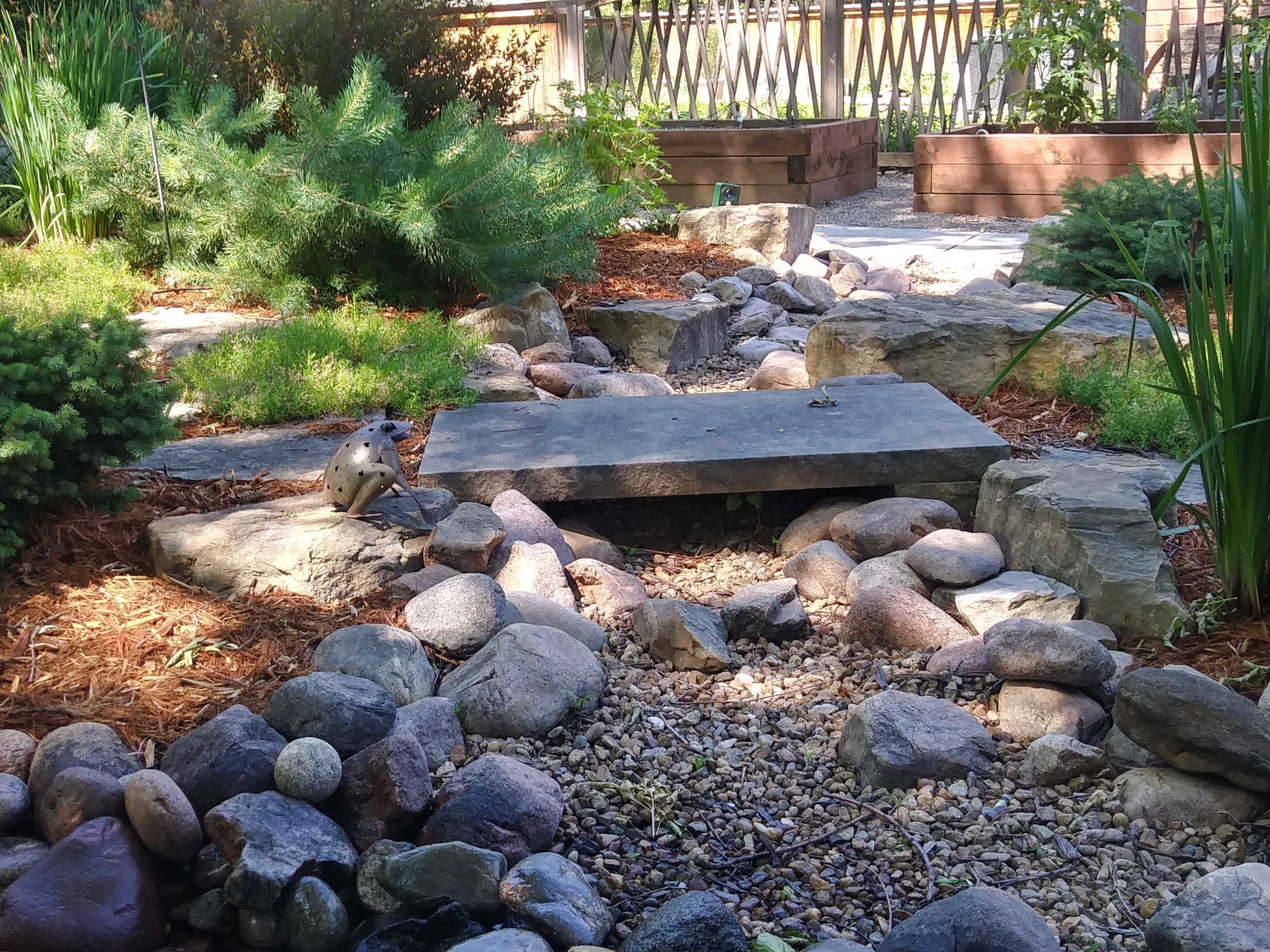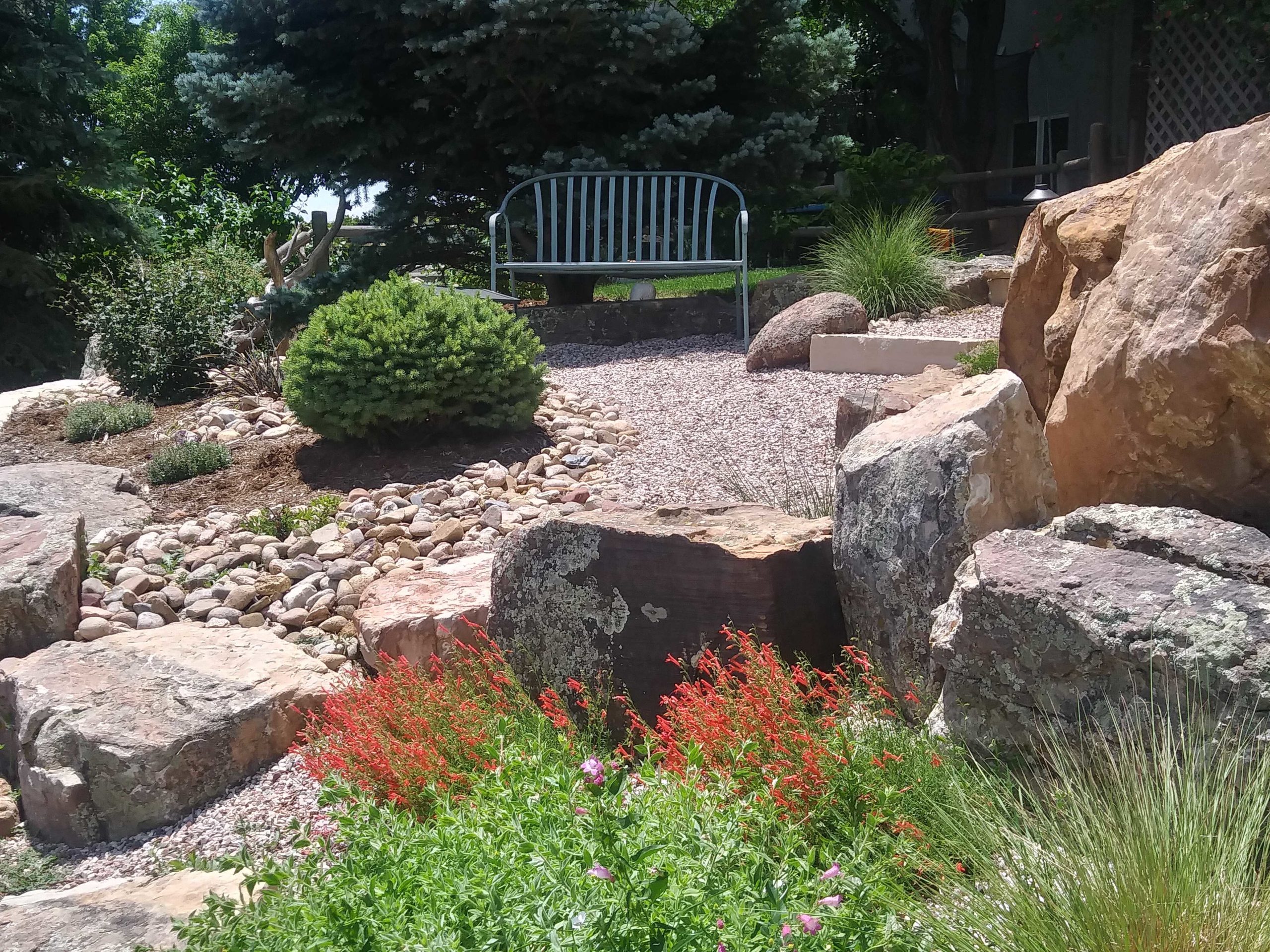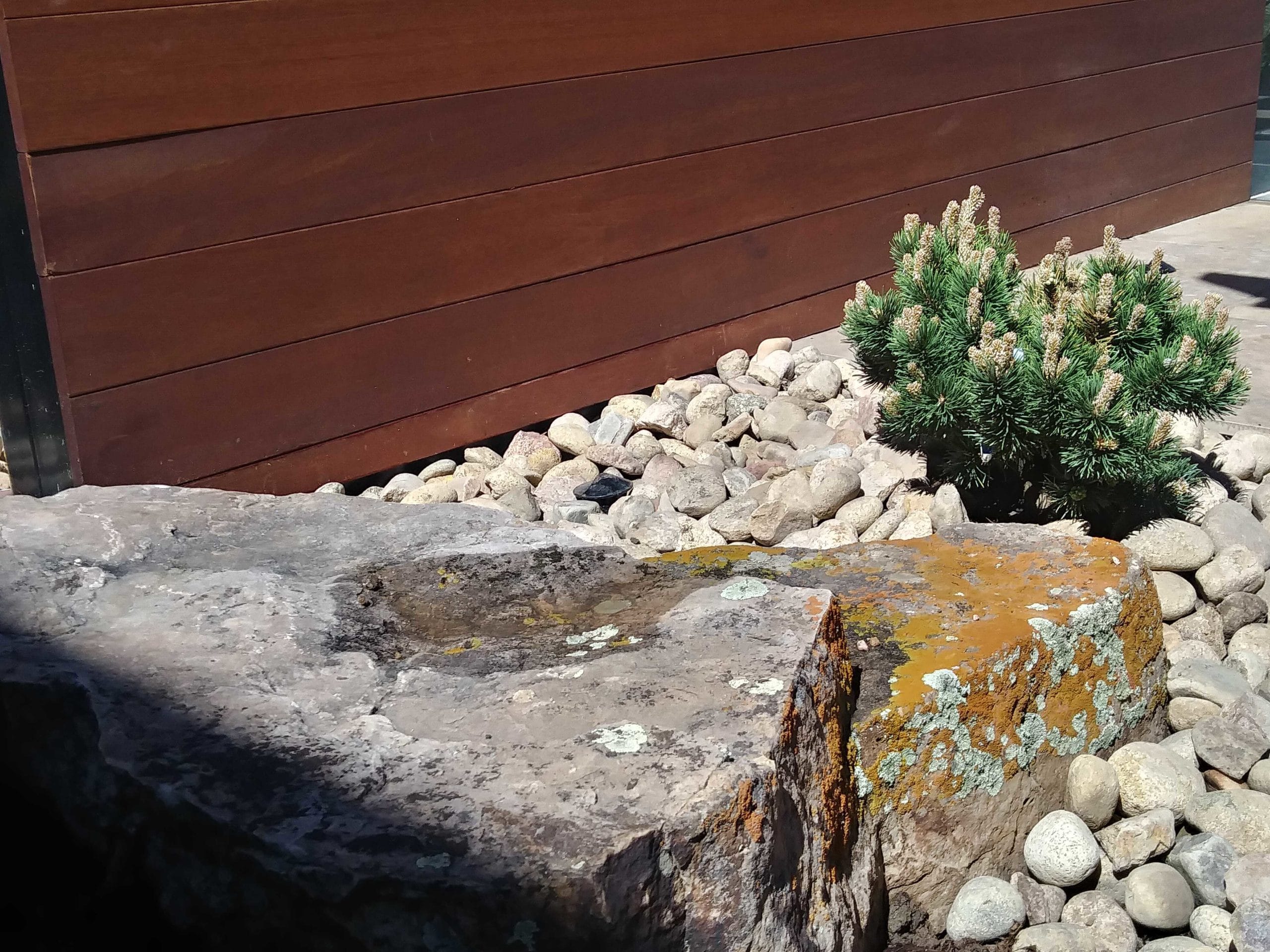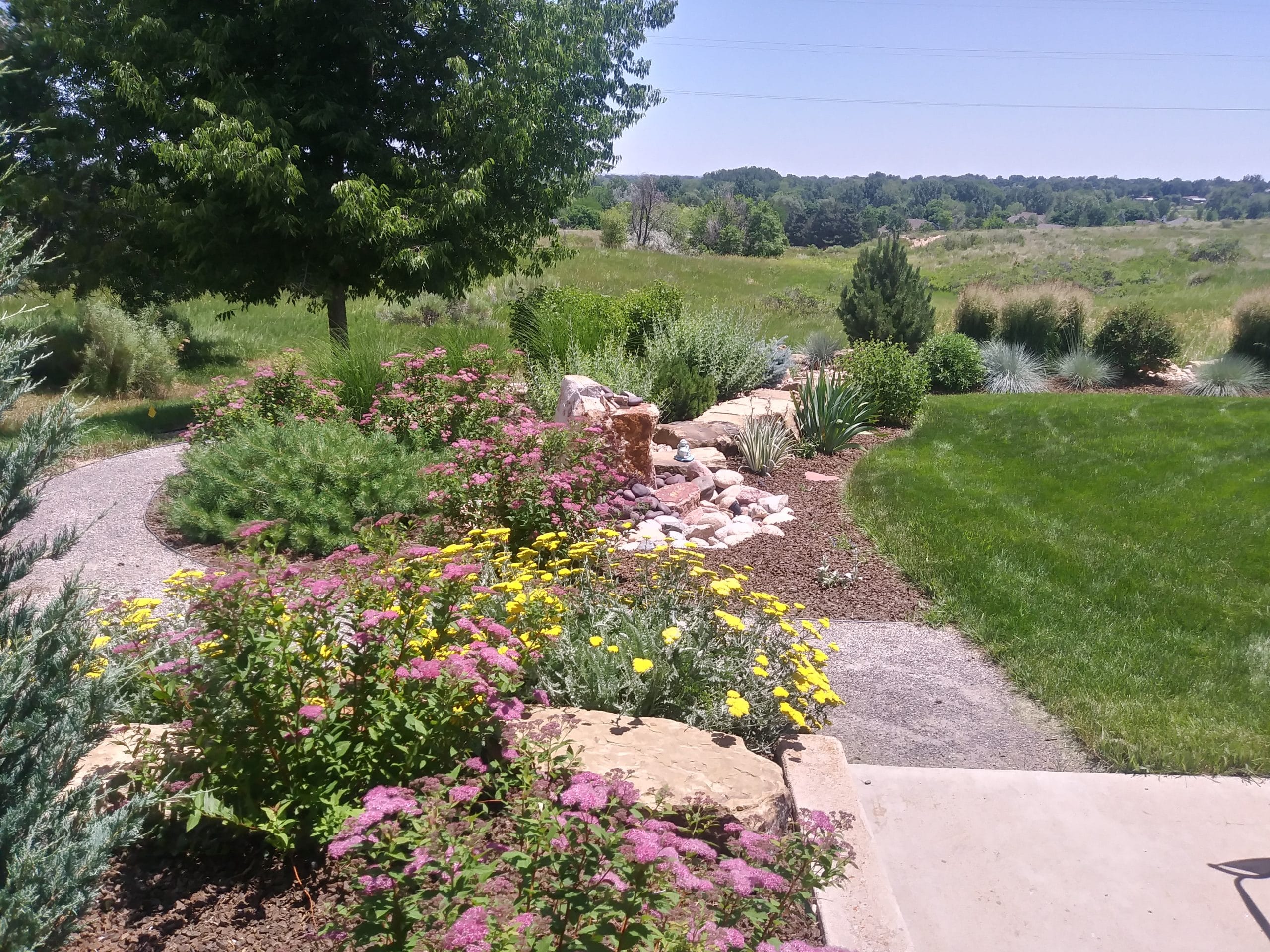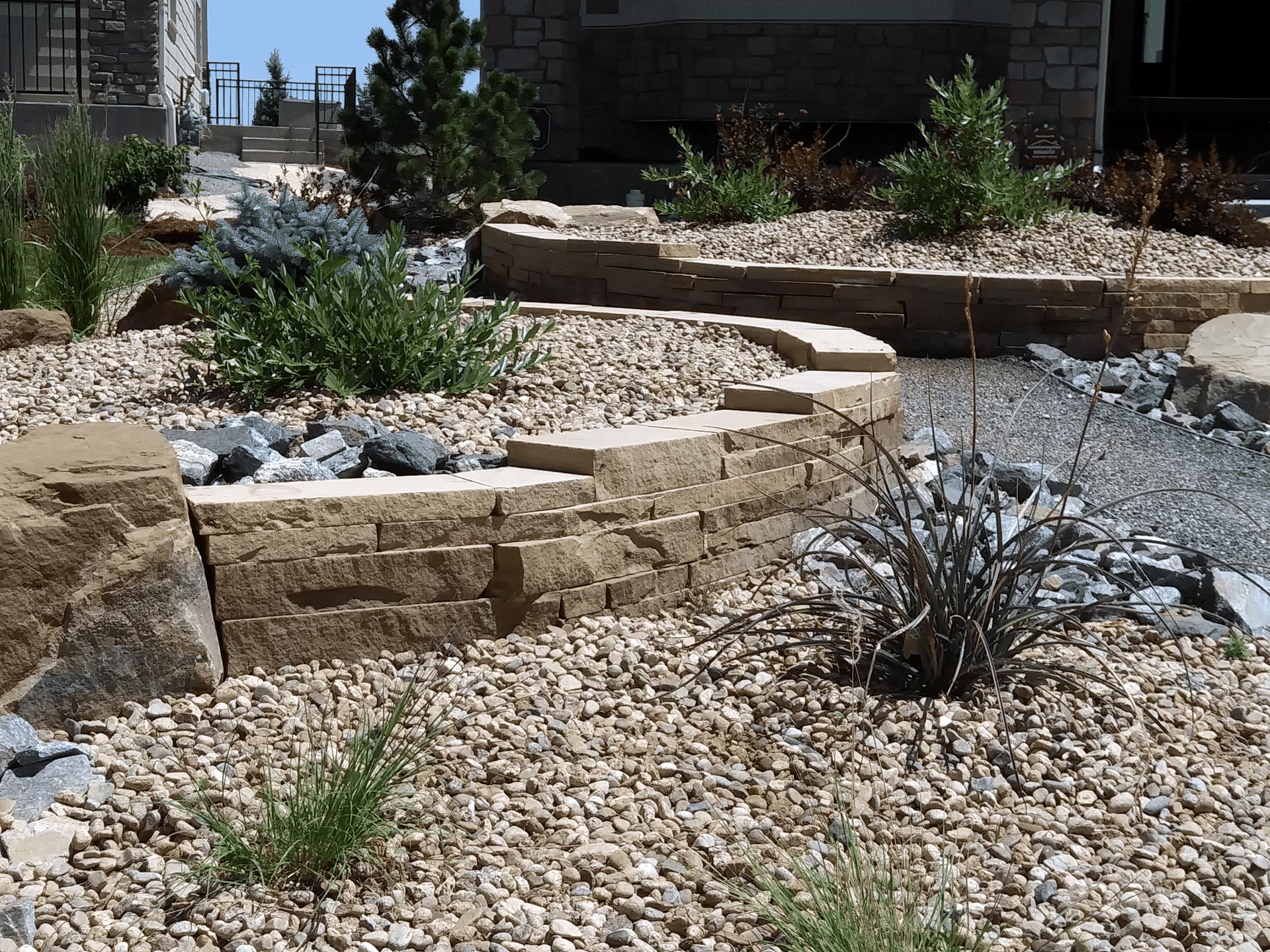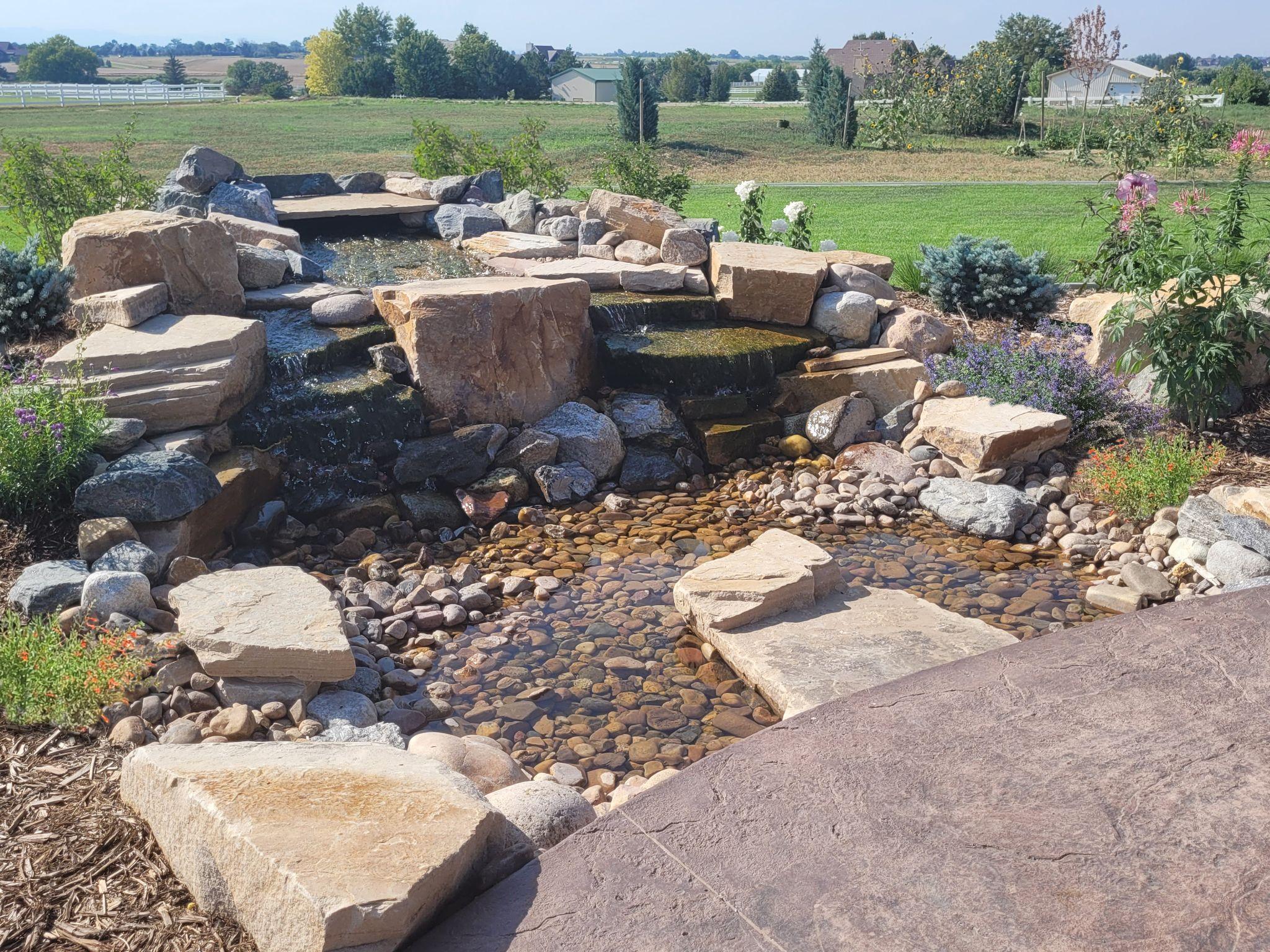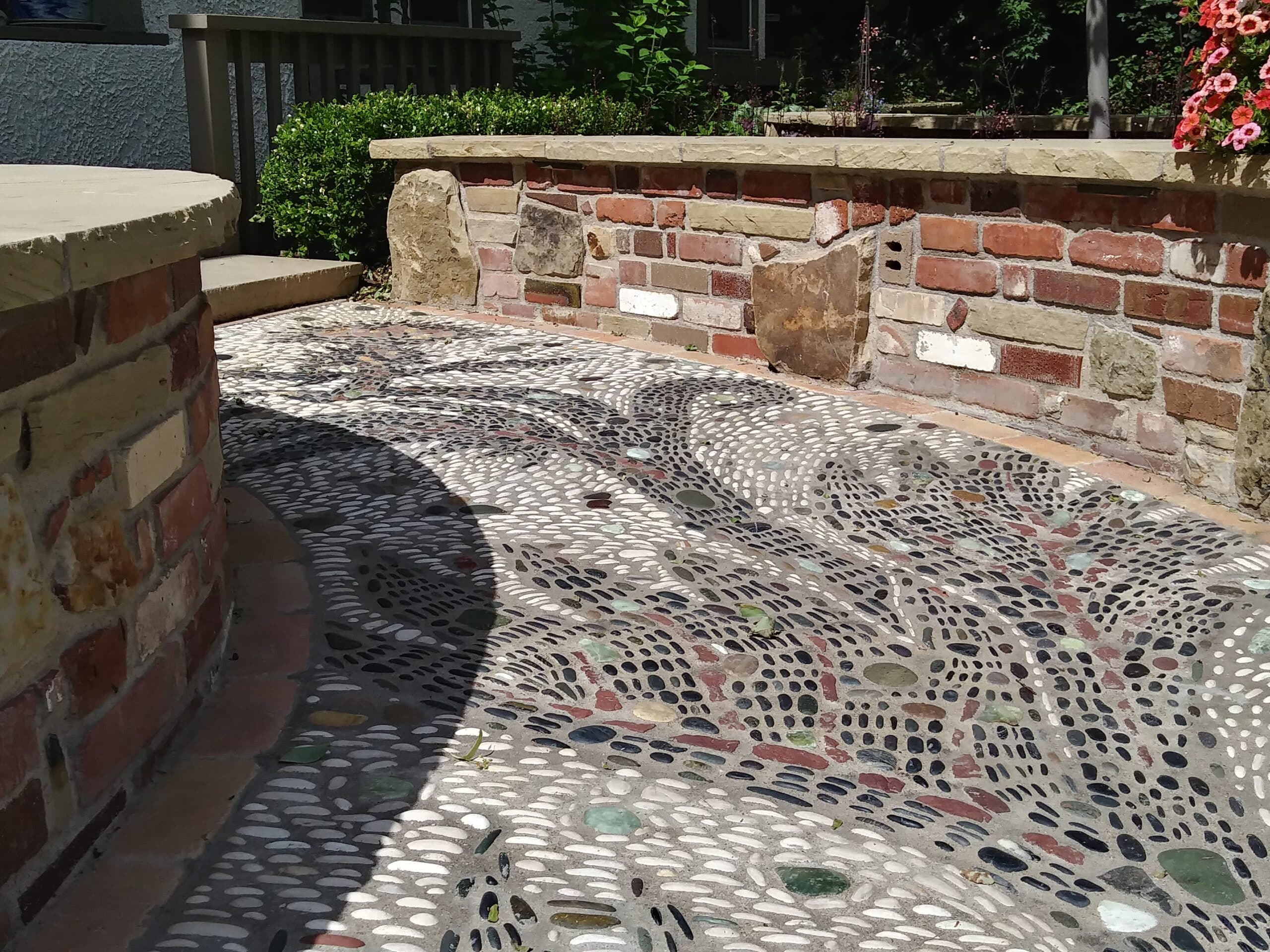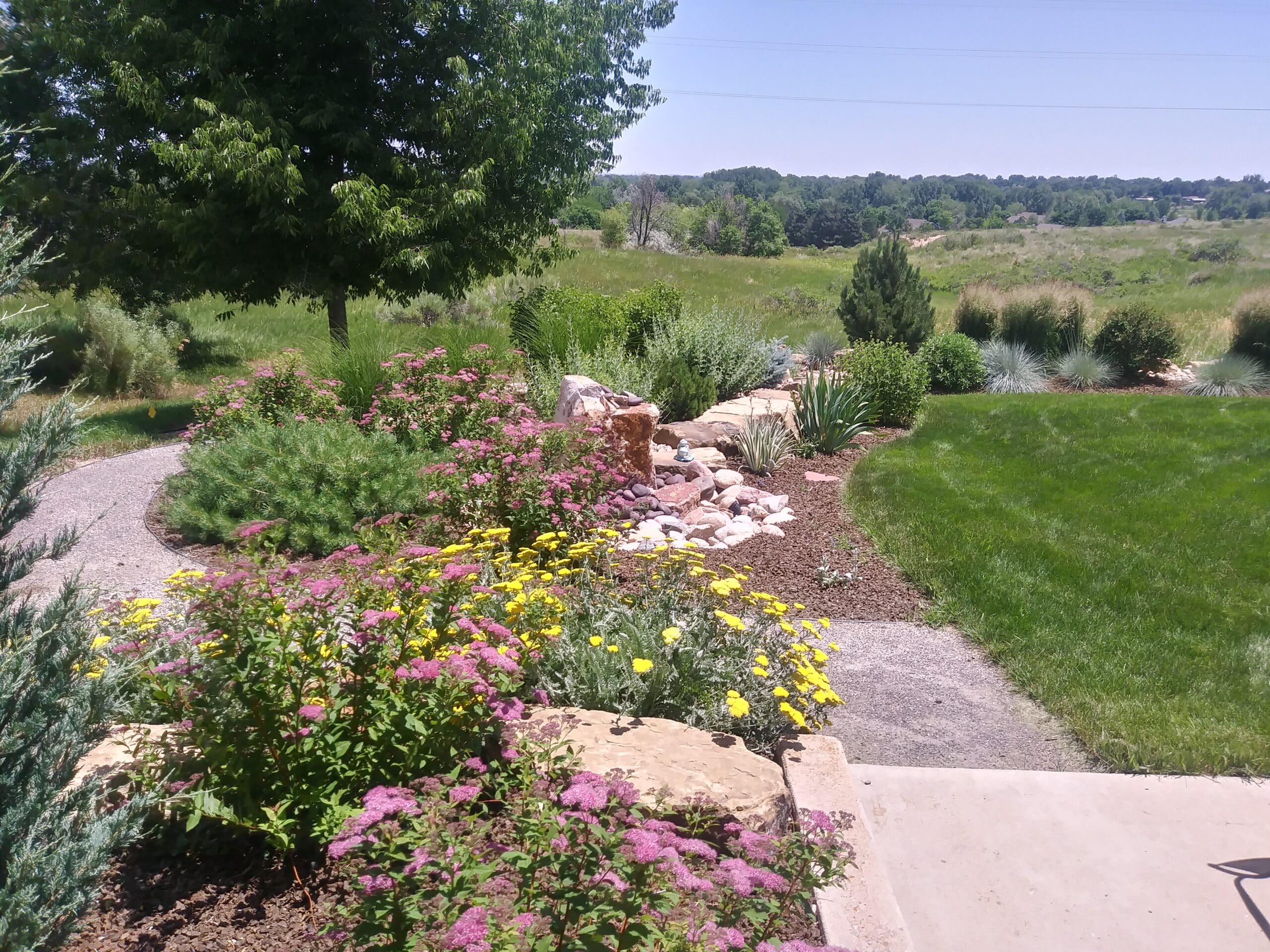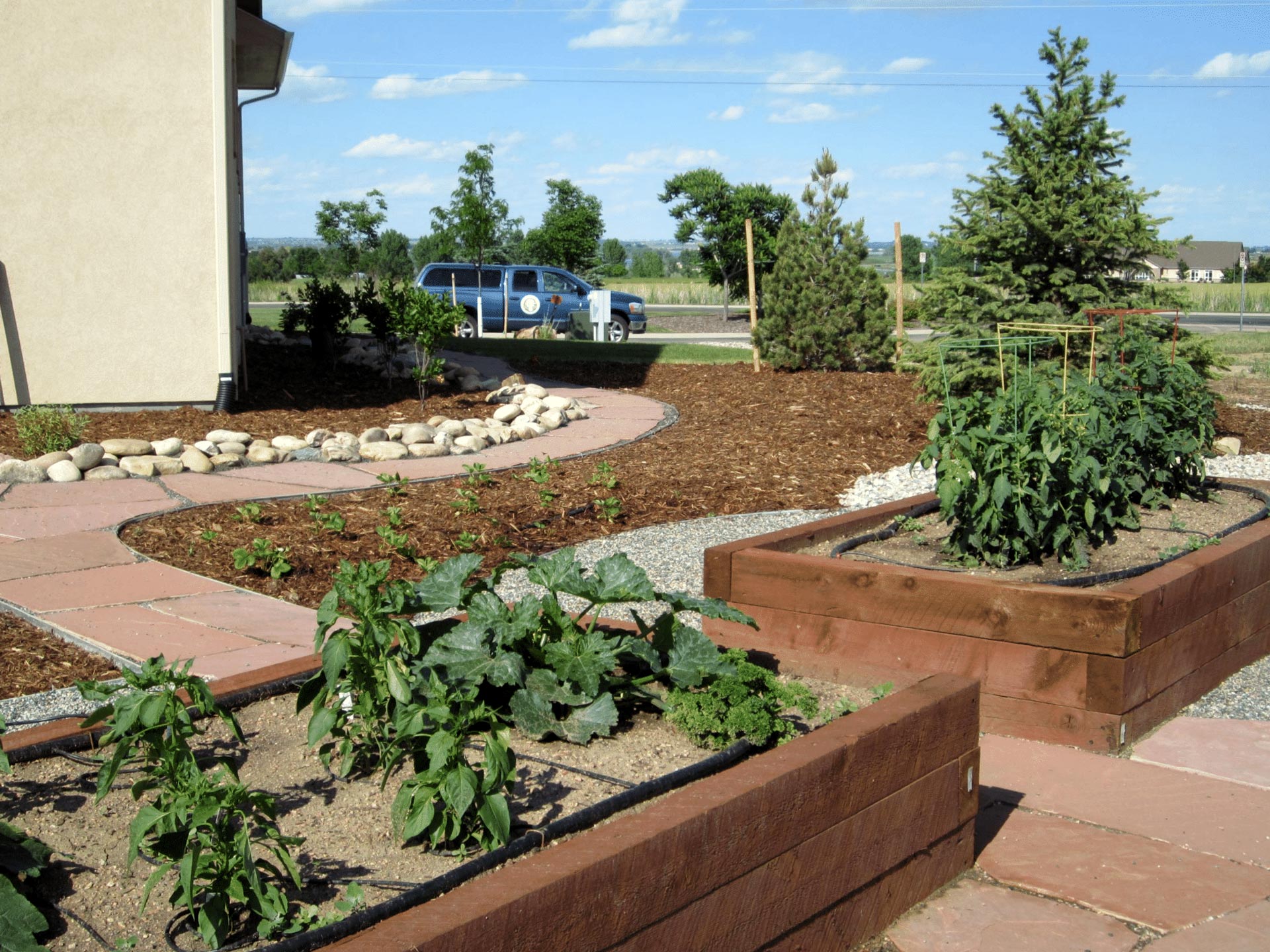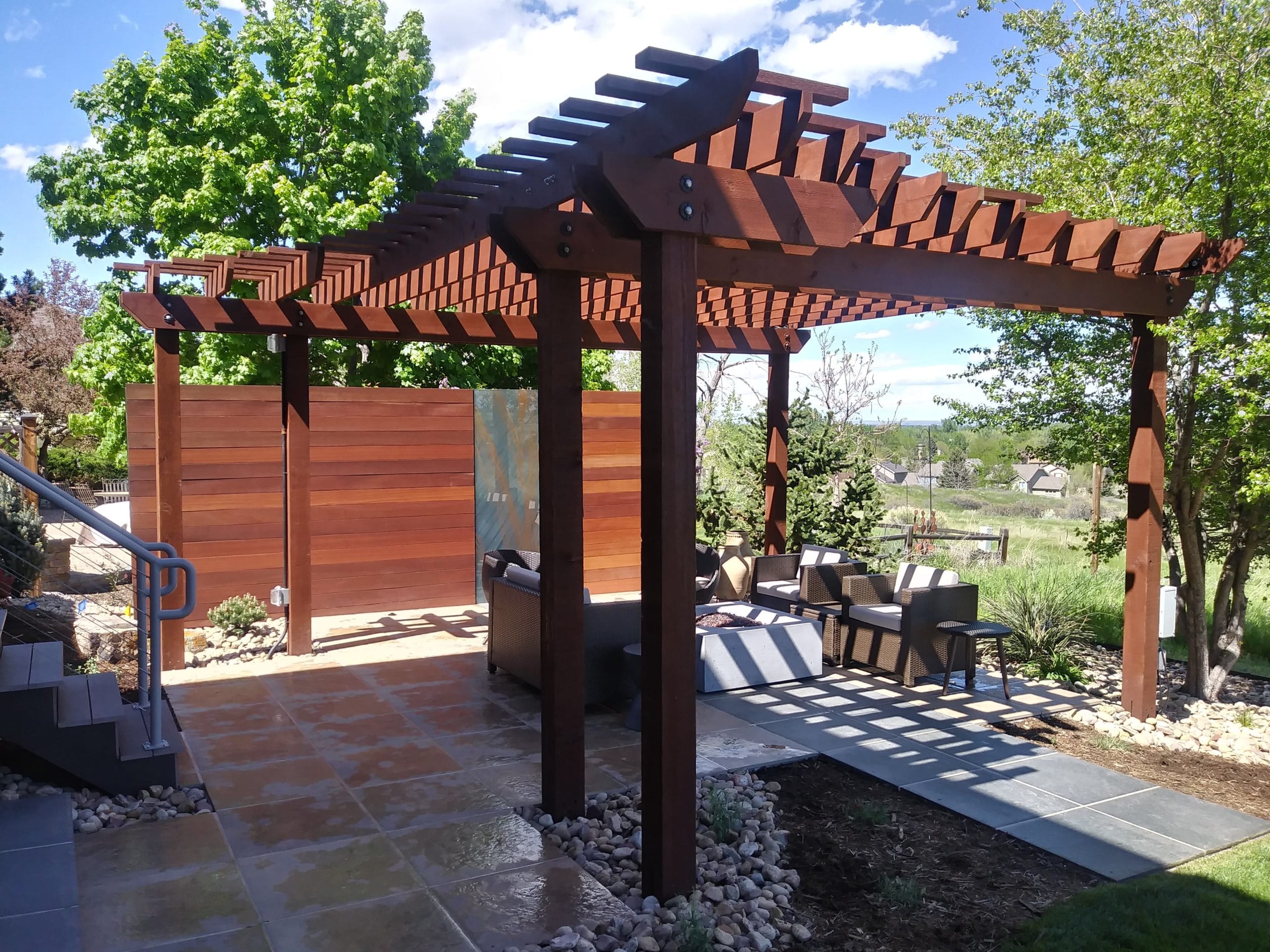Project Description
What is Xeriscaping?
Xeriscape Landscaping (also mistakenly pronounced as Zeroscaping) is a style that requires little to no irrigation or other maintenance. Xeriscape is derived from the Greek word ‘Xeros’ meaning dry and was coined by the Denver Water Board. This style of landscaping is appropriate for arid regions, including Colorado.
While being water-conscious, xeriscape incorporates a native plant selection that grows well in our climate (which also benefits the environment). This provides food sources for local pollinators, birds, and other wildlife. A goal of installing xeriscape is to reduce or eliminate chemicals that are often used on grass areas.
If you want to incorporate a water feature into your xeriscape, there are options available that use water responsibly. A water feature that re-circulates the same water is considered to be efficient in terms of water usage. When a liner and/or basin is used below the feature, it retains the same water with extremely minimal loss.
Xeriscaping is a more comprehensive approach that often gets overlooked. Below is a list of the main important principles of xeriscaping.
7 Principles of Xeriscaping:
- Panning and Designing
Having a plan that is perfectly suited to your needs and wants is the first step in the success of an efficient xeriscape. The main point of installing xeriscape is to limit the amount of grass lawn area on your property.
-
- Design a layout for the high and low-trafficked areas for the right placement of plants, turf, etc.
- Take notes of problem areas that are difficult to water and maintain
- Wildlife habitats incorporated and nectar plants for pollinators
- Possible permaculture concepts applied
-
- Soil Preparation
While it may not seem like it, soil preparation is a very important step in the xeriscape design and installation process. Some areas along the Front Range are known to have very poor clay soils.
-
- Properly amending soil to accommodate for plants that need well-drained conditions
- The end goal is to have healthy, living soil using organic fertilizers and composts, with no chemical fertilizers
- Acclimating the soil with the proper compost where needed
- Depleted soils in areas of new construction need the most attention
-
- Practical Turf Areas
Related to Step 1, proper planning is critical. A sustainable landscape based on xeriscape principles can incorporate grass areas. The main key point is to limit the lawn area to what you need for the activities you want in your yard.
-
- Plan practical grass/lawn areas so that they fit the need of the homeowner’s use
- Don’t incorporate grass areas where they are not needed/used and don’t have high foot traffic ( not on hot hills, near concrete, etc)
- High-traffic areas are best left to turf grasses (ex. bluegrass, that can take the wear)
- Properly placed turf will minimize water and chemical use in the landscape
-
- Efficient Irrigation
Every plant within the xeriscape landscape may have different watering requirements
-
- Some plants require more water than other plants, which means to have a regulated/adjustable efficient irrigation system
- Use a drip irrigation system for most non-turf beds; higher water plants will efficiently use less water on a drip system
- Allocating the appropriate amount of water to each plant and each area will make your landscape as water-efficient as possible
- Incorporate rainwater harvesting to recycle natural water and less water use!
-
- Appropriate Plant Selection
The main purpose of installing xeriscape on your property is to conserve water. This involves highlighting the importance of drought-resistant plants. Our dedicated team can assist you in selecting from a wide range of plants that are suitable for your yard’s requirements.
-
- Use of native plants that may be heat tolerant and don’t have high water demands
- Still offers beautiful blooms, shade, and other great-looking features
- Provides food sources for local pollinators, birds and other wildlife
-
- Mulching
Mulch helps to regulate the temperature of plant roots by retaining moisture.
-
- Mulch is most beneficial when it is applied directly around plants because it holds moisture and releases organic nutrients back into the soil
- Include different-sized rocks, pebbles, boulders, and mulch to provide depth and warmth to the xeriscape. You can even find some decorative rocks if you are hoping to spice up your outdoor living space.
- Helps save water, reduce weeding, and improve the transplanting and re-seeding process
- Be cautious of a few plants that might not like bark and/or mulch
-
- Appropriate Maintenance
Lack of maintenance will prevent any landscape from thriving. Monitoring your landscape frequently is an important part of the success.
- Organic and natural products used whenever possible
- Winter weather preparation of grass can improve hardiness and beauty in the long run
- Regularly check and repair irrigation systems each spring
Grounded Landscape is committed to the ethos of Xeriscape Landscaping, prioritizing water conservation and ecological balance. Our approach incorporates native plants, thoughtful planning, soil health, efficient irrigation, careful plant selection, strategic mulching, and ongoing maintenance. By adhering to these principles, we craft aesthetically pleasing landscapes that contribute to a sustainable ecosystem in Colorado. We’re dedicated to creating beautiful spaces that embrace environmental responsibility for a greener future. If you are in Northern Colorado looking to upgrade your landscape’s water conservation, contact our professional team today to start your next Xeriscape landscaping project.


